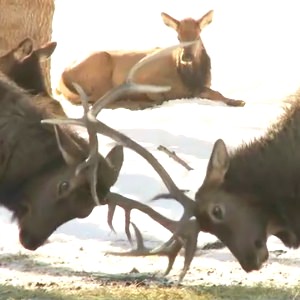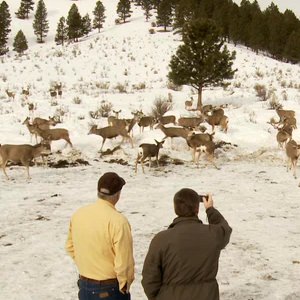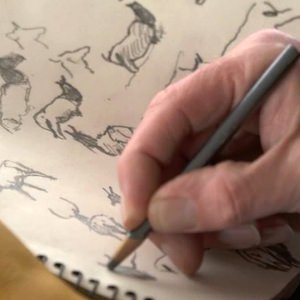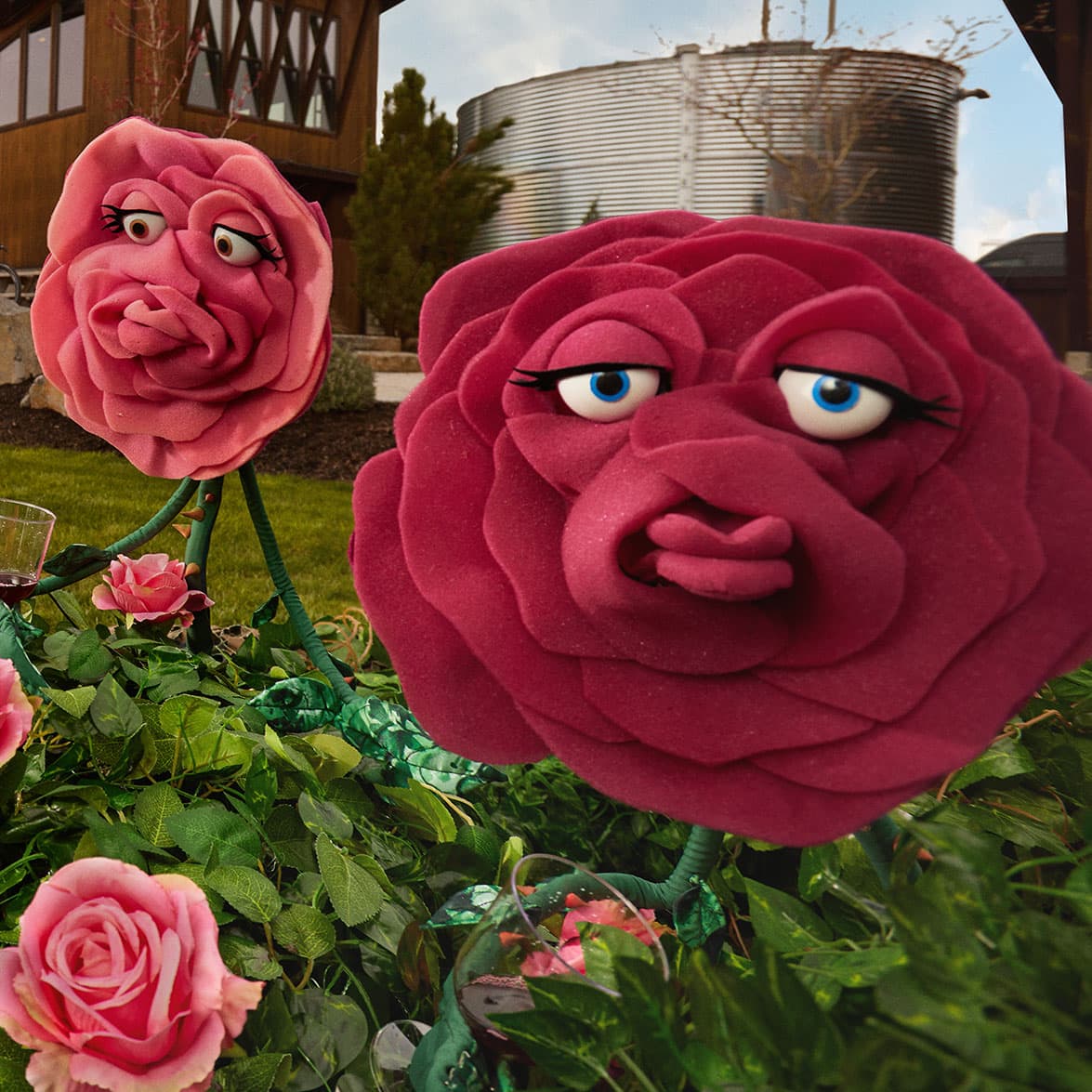The snow falls heavy and powdery drifts build to waist-deep as the temperature hovers near 20 degrees in Baker County.
Ed Miguez and his crew call it another day at the “best office in Oregon.” Miquez is the Oregon Department of Fish and Wildlife (ODFW) manager of the 12,000-acre Elkhorn Wildlife Area, located near North Powder.
“These are all mule deer,” says Miguez. “Maybe 200 or more and you can see even more coming up through the sage brush.”
The team stocks nine feeding stations each day along a 150-mile loop through the vast mountain refuge. Not only deer are fed; Rocky Mountain elk herds also get a daily ration of alfalfa hay to keep them in the timber rather than valley ranchlands.
“It works too!” says Miguez. “We still have occasional problems, but for the most part once we get them to these feed sites and they’re here for the winter. That means they are not on private lands down below, eating the rancher’s hay stacks.”
Your best chance to see the elk is at the Anthony Creek feeding station near the John McKean Memorial. The new memorial includes photos and information that tells the story of the ODFW’s first director, John McKean, who helped establish the Elkhorn area in 1971.
Nearby, wildlife artist Paul Hoelscher is giddy as a schoolkid as he sketches “models” for his next painting. “Their coats are beautiful, their shapes are beautiful,” he says. “It seems it takes little effort for them to move through the snow drifts—no effort at all.”
Hoelscher says it’s rare to get that close to so many elk and despite near white-out conditions, he is loving each minute of it.
“These look like really healthy animals,” says the longtime painter who specializes in Oregon wildlife. “I like to watch how this huge animal is put together, how does it move, how does it stand — it’s all a very valuable experience for someone who likes animals and likes to make art of animals.”
That much is certain for the Minnesota native who made Baker City his home a dozen years ago. He loves that the great outdoors and, especially, so many wildlife species are easy to see — practically off his doorstep — in Eastern Oregon.
“I work pretty religiously from sketchbooks,” says Hoelscher. “In each of our cars, I keep a couple of sketchbooks so that everywhere I go, if I see something special, I’m ready to go to work.”
Peterson’s Gallery in downtown Baker City displays Hoelscher’s wonderful artwork which he calls “wildlife in action.”
“As an artist, I find myself asking: ‘Why do I do this?’” says Hoelscher. “Well, it’s largely because it’s in-motion, it’s moving —whether running, flying or swimming—it’s just moving! Life in the wild isn’t very sedentary for long and that’s something that I’m just drawn to.”
Hoelscher discovered his artistic gift as a child and received formal training in college. Now, he is one of the region’s best at capturing Oregon wildlife with a brush, paint and canvas.
“I have enjoyed drawing as long as I can remember and even coloring in coloring books when I was very young. I’m from a rural background and so a great fan of animals and nature,” says Hoelscher. “I love the time I spend creating images of the things I see.”
Hoelscher is a big believer that nature is inspiring and the time he spends in the field is cherished because each day is full of promise. “It really is thrilling and breath-taking to see a five-or-six-hundred-pound bull elk, or two or three, in a stand of timber,” he says. “I think many people head to the outdoors for the chance to see something like this, looking for wildlife. That’s inspiring for me, and I think most people are pretty awestruck at what Oregon has to offer. It is a very special state and a terrific place to be.”



